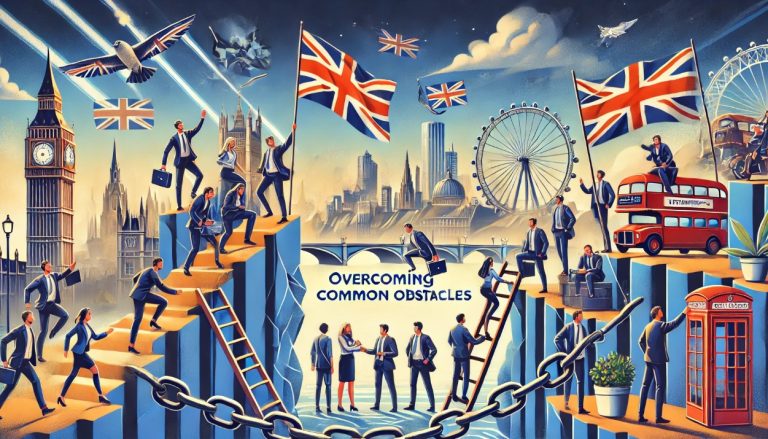If you’re considering a career in graphic design, it’s crucial to understand the salary expectations and professional pathways available in this vibrant field. Graphic designers play a vital role in shaping visual communication, bringing ideas to life through branding, advertisements, brochures, magazines, website designs, product packaging, and displays.
In this blog, we’ll explore everything from entry-level earnings to career growth opportunities in graphic design, highlighting the skills, educational paths, and experience needed to thrive in the UK.
What is the Average Salary for a Graphic Designer in the UK?

The typical annual salary for a graphic designer in the UK ranges from £20,000 for entry-level positions to around £40,000 for experienced professionals. Most graphic designers work approximately 37 to 40 hours per week, though flexibility is often required, including occasional evening work to meet deadlines.
Salary Overview
| Experience Level | Salary Range | Average Salary |
| Entry-Level | £18,000 – £23,000 | £20,500 |
| Mid-Level (3-5 years) | £25,000 – £35,000 | £30,000 |
| Experienced (5+ years) | £30,000 – £40,000 | £35,000 |
| Senior Roles | £40,000 – £50,000 | £45,000 |
Industries and Pay
Salaries can vary significantly across different industries. Sectors such as marketing, digital media, and advertising often offer higher pay due to the strong demand for skilled designers. Understanding these salary ranges is essential for both newcomers and experienced professionals aiming to advance in their careers.
How Much is Entry-Level Graphic Designer Salary?

For those just starting, salaries for graphic designers typically range from £18,000 to £23,000. Entry-level positions, such as Junior Graphic Designer or Design Assistant, involve supporting senior designers with basic tasks while gaining hands-on experience.
Entry-Level Salary Breakdown
| Position | Salary Range | Average Salary |
| Junior Graphic Designer | £18,000 – £22,000 | £20,000 |
| Design Assistant | £18,000 – £21,000 | £19,500 |
| Intern | £15,000 – £18,000 | £16,500 |
Educational Background
Most entry-level designers hold a degree or diploma in graphic design or related fields, such as art and design or communication design. Mastery of design software and a strong portfolio showcasing creative projects are crucial for securing these initial roles.
How Much is Experienced Graphic Designer Salary Range?
With a few years of experience, designers can expect salaries between £30,000 and £40,000. Those with over ten years of experience may see salaries reaching £50,000 or more, particularly in senior roles like Art Director or Creative Director.
Experienced Salary Overview
| Position | Salary Range | Average Salary |
| Mid-Level Designer | £25,000 – £35,000 | £30,000 |
| Senior Graphic Designer | £35,000 – £45,000 | £40,000 |
| Art Director | £40,000 – £50,000 | £45,000 |
| Creative Director | £50,000+ | £55,000 |
Senior Roles and Responsibilities
Experienced graphic designers often progress to roles such as Senior Graphic Designer or Art Director, where they take on project oversight, mentor junior staff, and develop design concepts for large-scale projects. Achieving these promotions requires a blend of experience, a refined portfolio, and strong leadership skills.
What is the Freelance Graphic Designer Rates in the UK?

Freelance designers in the UK generally charge between £15 and £40 per hour, with rates influenced by experience and project complexity. Freelancing provides designers with the freedom to select their projects and set competitive rates, often higher than those for in-house positions.
Daily and Hourly Rates
Beginner freelancers may charge around £15 – £20 per hour, while more experienced freelancers can command £30 – £50 per hour. Daily rates can range from £150 to £400, offering flexibility and the potential for higher earnings, though this path requires strong self-marketing and client management skills.
What are the Highest Paying Cities for Graphic Designers in the UK?
| City | Average Salary per Year |
| London | £32,188 |
| Oxford | £29,171 |
| Exeter | £27,825 |
| Watford | £27,610 |
| Birmingham | £26,736 |
| Nottingham | £25,712 |
| Derby | £25,672 |
| East London | £25,275 |
| Sheffield | £24,538 |
This table highlights the top cities for graphic designer salaries in the UK, with London leading due to its higher cost of living and demand for skilled design talent. Designers in these cities can expect slightly higher salaries compared to other regions, making them ideal locations for maximizing earning potential in graphic design.
What are the Graphic Designer Salaries by Employer in the UK?
| Employer | Rating | Salary Range | Median Salary |
| Twinkl Educational Publishing | 2.0 | £18K – £22K | £20K |
| Freelancer | 4.2 | £24K – £37K | £30K |
| SelfEmployed.com | 4.4 | £25K – £40K | £33K |
| OLIVER Agency | 3.4 | £27K – £40K | £33K |
| BBC | 3.9 | £25K – £40K | £33K |
| Boohoo Group | 2.9 | £22K – £30K | £29K |
| Hamilton-Brown | 3.2 | £30K – £39K | £32K |
| SelfEmployed.com | 4.4 | £25K – £60K | £40K |
This table provides insights into the salary ranges offered by various employers for graphic designers in the UK, along with employer ratings and available positions. Freelance and self-employed designers exhibit a higher earning potential, with salaries reaching up to £60K. Established companies like the BBC and OLIVER Agency also offer competitive salaries, reflecting the high demand for skilled designers.
How to Become a Graphic Designer in the UK?

Embarking on a career in graphic design offers numerous pathways, each requiring a combination of formal education, practical training, and hands-on experience. Below is a comprehensive guide to starting your journey in this dynamic field:
1. University Course
Pursuing higher education can significantly enhance your prospects in graphic design. You might consider enrolling in one of the following programs:
- Foundation Degree: A one or two-year course that provides a foundational understanding of design principles.
- Higher National Diploma (HND): A vocational qualification that combines theory and practical skills, typically taking two years to complete.
- Bachelor’s Degree: A three or four-year program in a design-related field such as:
- Graphic Design
- Art and Design
- Communication Design
- Illustration
During your time at university, seek out internships or placements. These opportunities not only provide valuable work experience but also help you build a professional network, making you a more competitive candidate upon graduation.
2. College Course
If you prefer a more hands-on approach, enrolling in a college course can be a great starting point. Options may include:
- Graphic Design: Focuses specifically on the principles and techniques of design.
- Art and Design: Provides a broader understanding of artistic concepts and practices.
Completing a college course can prepare you for entry-level positions, such as Design Assistant. Remember, a strong portfolio is essential when applying for these roles, showcasing your creative abilities and design projects.
3. Entry Requirements
To pursue formal education in graphic design, you typically need to meet specific entry requirements, which may include:
- Foundation Diploma in Art and Design: This qualification is often required for those who wish to progress to higher education.
- A-Levels: Generally, you’ll need:
- 1 to 2 A-levels for a foundation degree.
- 2 to 3 A-levels for a bachelor’s degree.
Importantly, a strong portfolio that demonstrates your creativity and relevant experience can sometimes carry as much weight as formal qualifications, making it a crucial element of your applications.
Skills and Knowledge Required for a Graphic Designer
Graphic designers must possess a blend of creative and technical skills to thrive in the industry. Here are some essential skills you’ll need:
Core Skills
- Proficiency in Design Software: Mastery of tools like Adobe Photoshop, Illustrator, and InDesign is vital for creating professional-quality designs.
- Creativity: The ability to generate innovative and engaging design solutions is fundamental in distinguishing yourself in a competitive field.
- Attention to Detail: A keen eye for detail is essential, as it impacts branding, visual communication, and overall design quality.
Additional Skills
- Verbal Communication and Presentation Skills: Effectively articulating your ideas and designs to clients and team members is crucial for successful collaboration.
- Knowledge of Media Production and Fine Arts: A background in various media forms enhances your versatility as a designer.
- Adaptability: The design industry is ever-evolving, so being open to change and new techniques is important for long-term success.
- Analytical Thinking: Strong problem-solving abilities and analytical skills help in concept development and refining design ideas.
These skills are developed through education, continuous practice, and real-world experience. As you cultivate your abilities, you’ll be better equipped to meet client needs and adapt to industry trends, ultimately paving the way for a successful career in graphic design.
Day-to-Day Tasks of a Graphic Designer

Graphic designers typically engage in various tasks daily, including:
- Discussing client requirements and developing creative ideas.
- Working within budgets and meeting deadlines.
- Producing drafts and presenting ideas to clients.
- Using specialist software to create and refine designs.
- Reviewing completed work to ensure it meets client expectations.
- Staying updated on design trends and software advancements.
The role is dynamic, often involving collaboration with clients, marketing teams, and other designers to achieve cohesive, high-impact visuals.
Tips for Building a Strong Graphic Design Career
- Gain Experience: Build a portfolio with work experience, internships, or freelance projects to stand out in a competitive field.
- Join Professional Bodies: Membership in organizations such as the Chartered Society of Designers and the International Society of Typographical Designers can provide networking opportunities and professional development resources.
- Master Design Software: Proficiency in industry-standard tools like Adobe Creative Suite and emerging software like Figma (for UX/UI design) can enhance career prospects.
These steps can help boost earning potential and create opportunities for career advancement.
Conclusion
Graphic design is a fulfilling career that offers flexibility, creativity, and opportunities across various sectors. By understanding the expected salary range and the skills required, aspiring designers can effectively plan their career paths and take proactive steps to enhance their earning potential, whether through education, experience, or professional networking.
A career in graphic design not only allows individuals to express their creativity but also provides numerous avenues for professional growth, making it an attractive choice for many.
FAQ Section
What is the starting salary for graphic designers in the UK?
The starting salary for graphic designers ranges from £18,000 to £23,000 per year, with entry-level roles such as Junior Designer or Design Assistant.
How does experience affect a graphic designer’s salary?
As designers gain experience, they can expect salaries between £30,000 and £40,000, with senior roles like Art Director earning upwards of £50,000.
What are the typical working hours for graphic designers?
Graphic designers usually work 37 to 40 hours per week, although additional hours may be needed to meet project deadlines.
How can I get into graphic design without a degree?
You could start with a college course in graphic design or art and design and use your portfolio to secure entry-level work. Practical experience is essential for career growth.
Is freelancing a viable option for UK graphic designers?
Yes, freelancing offers flexibility and competitive rates, often ranging from £15 to £40 per hour depending on experience.
What professional bodies can help me advance in graphic design?
Joining organizations like the Chartered Society of Designers can provide valuable networking opportunities and professional resources.
Are graphic design skills transferable to other fields?
Yes, graphic design skills are highly transferable and can be useful in roles such as UX/UI design, web development, and branding.




